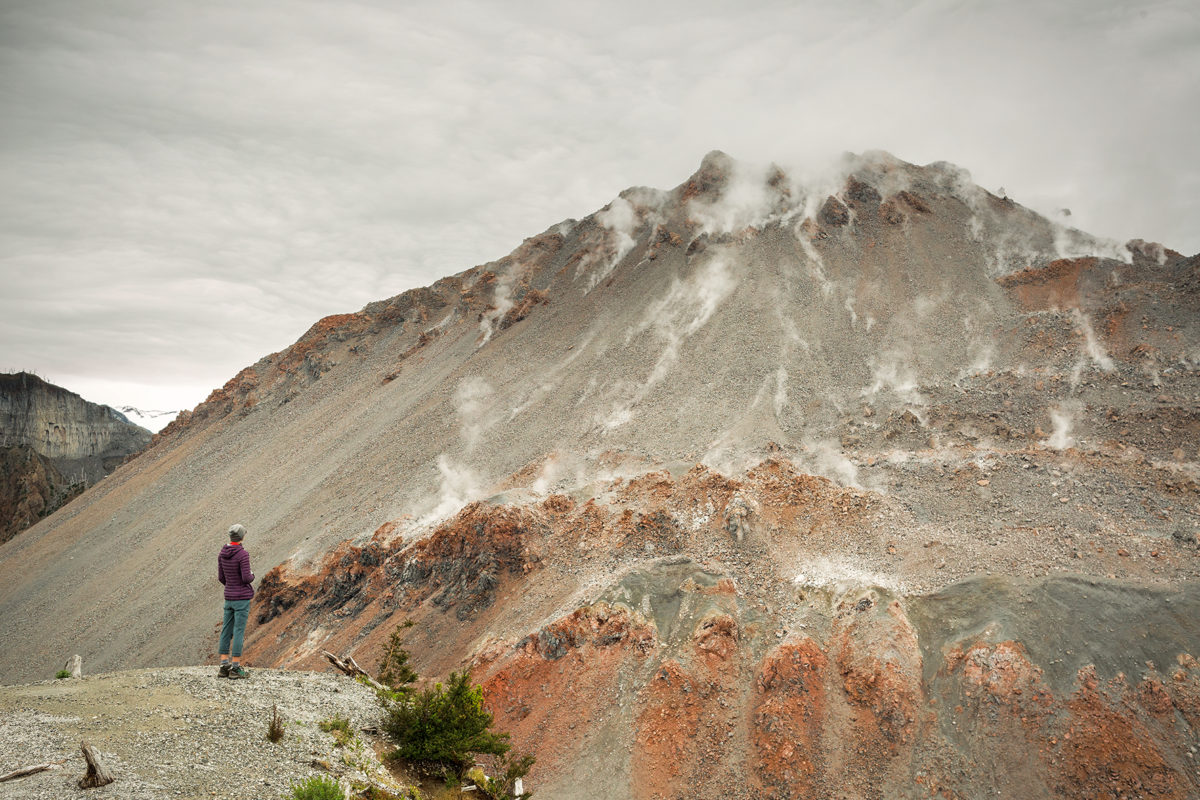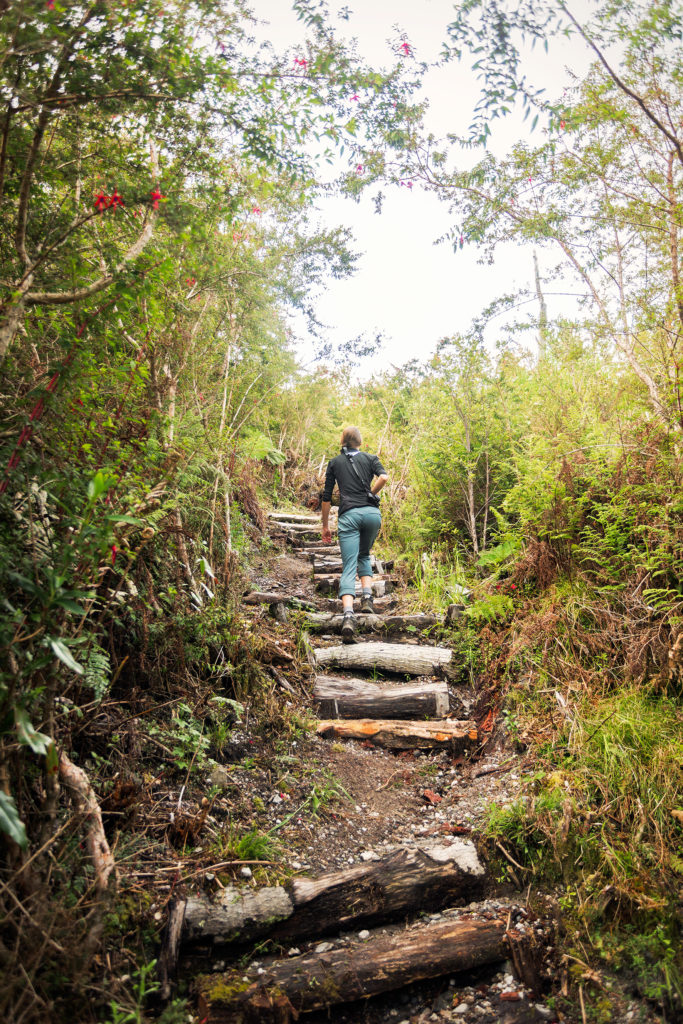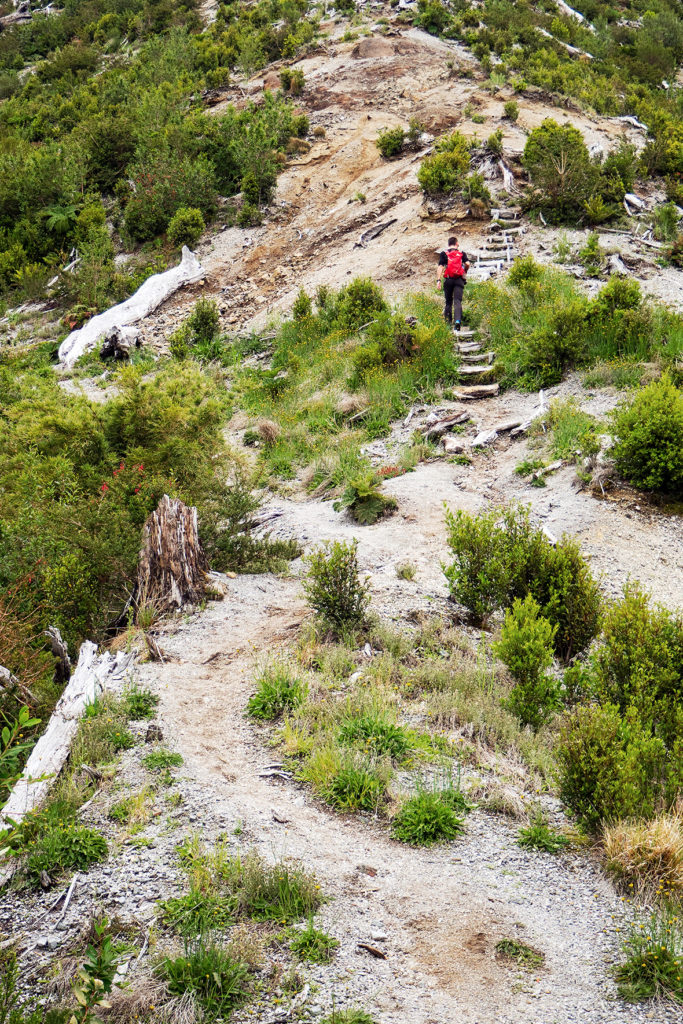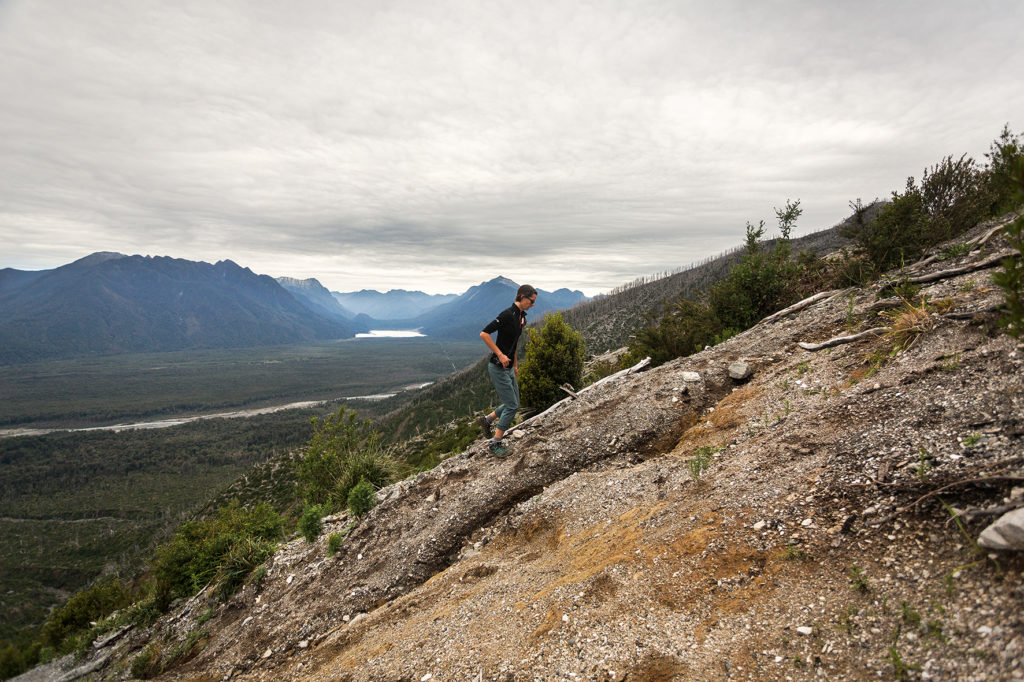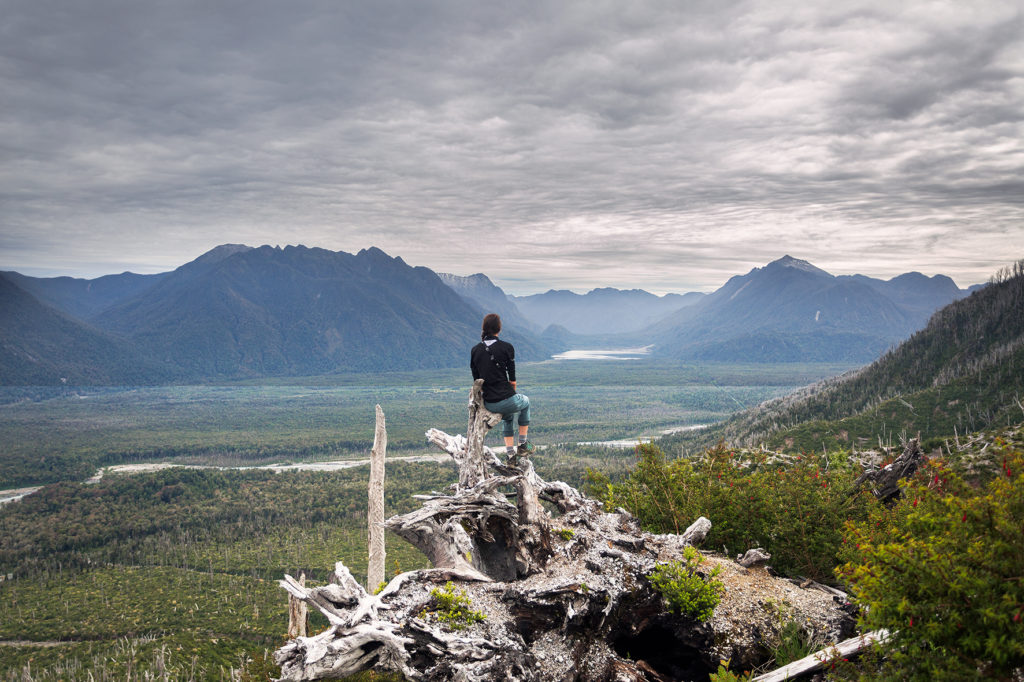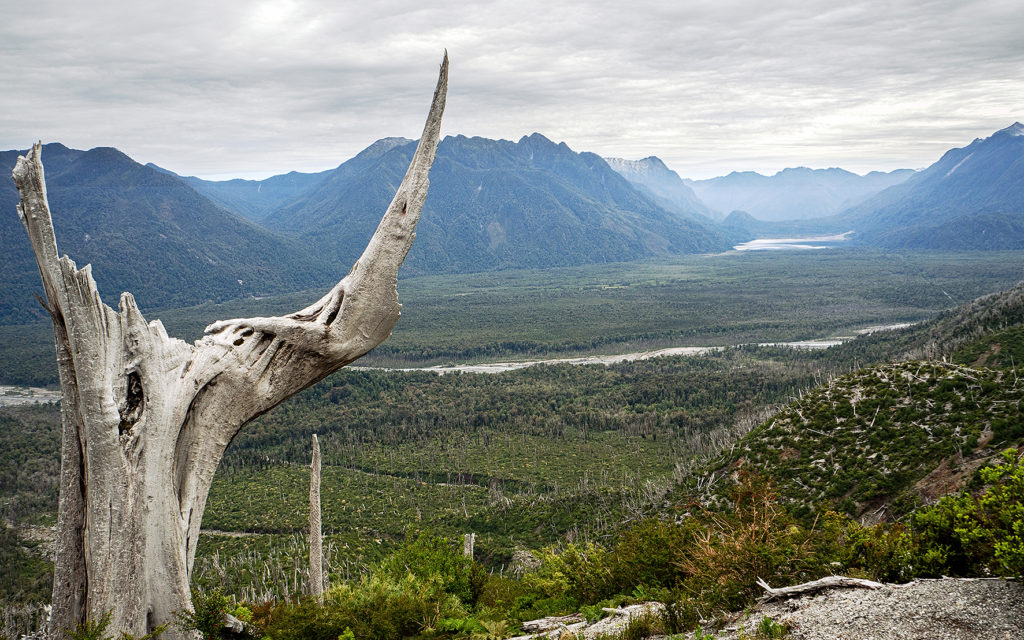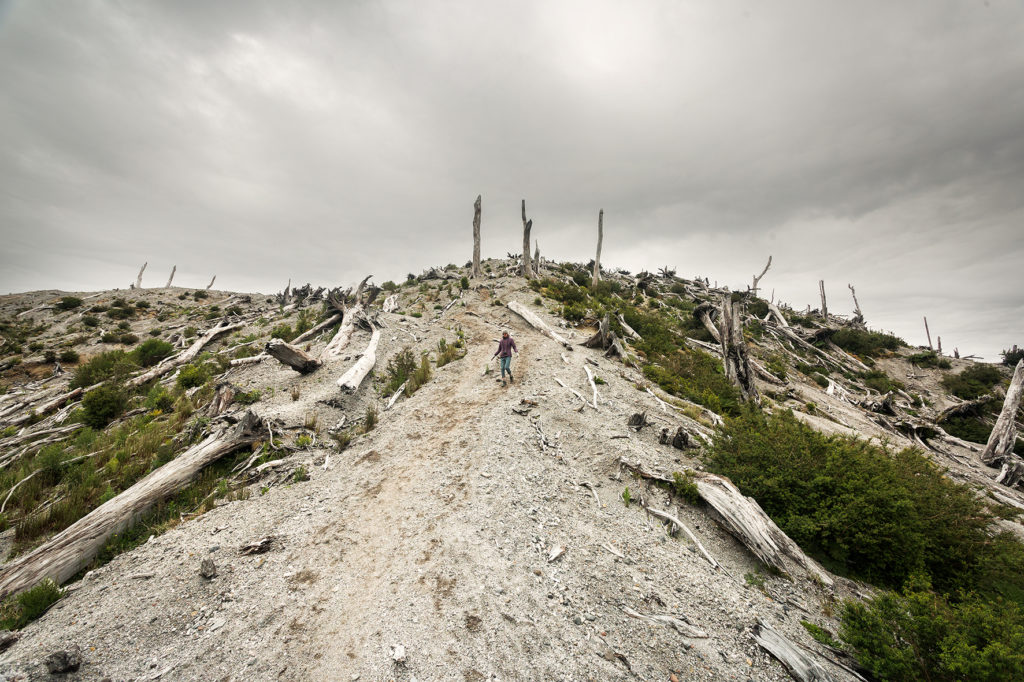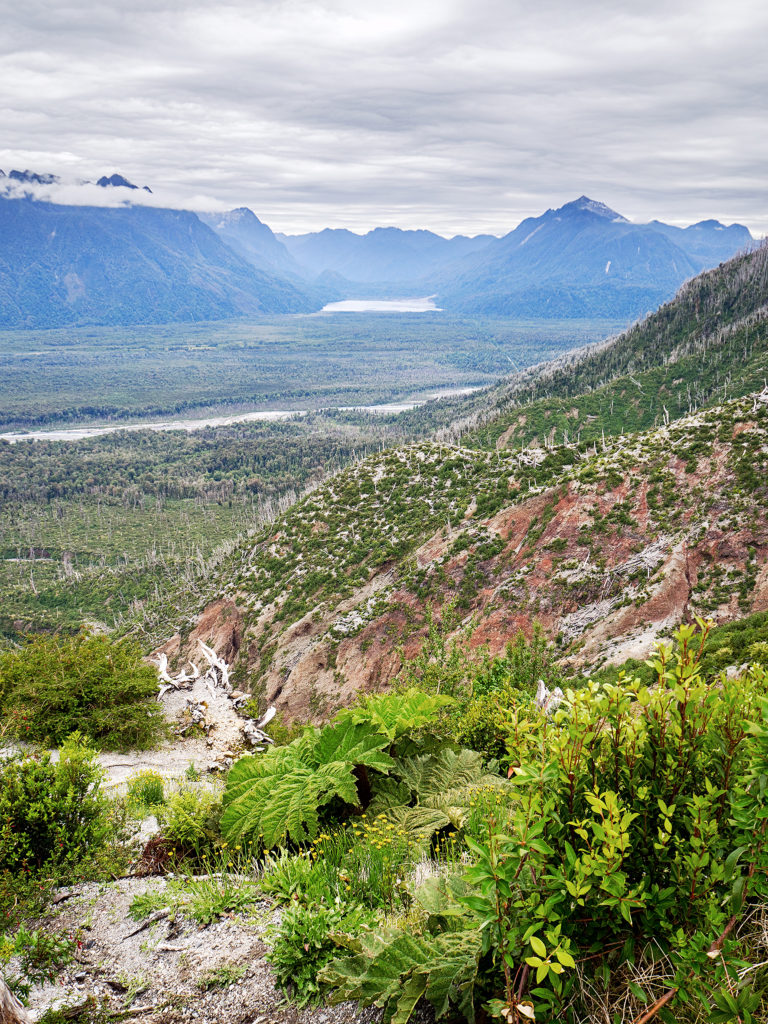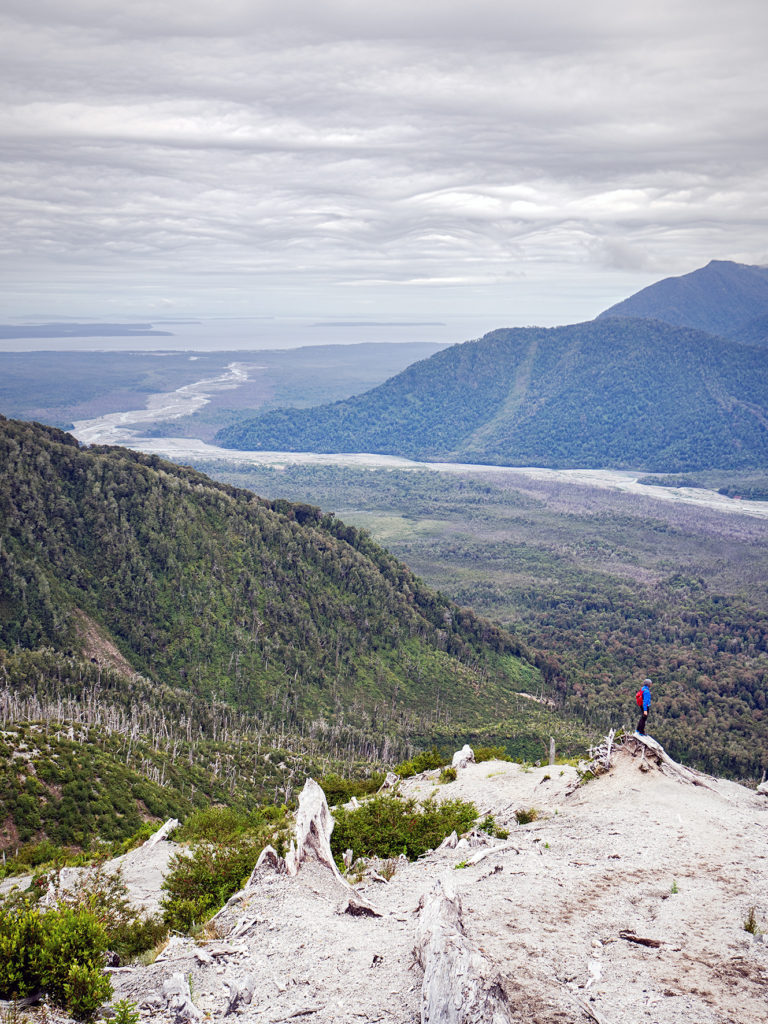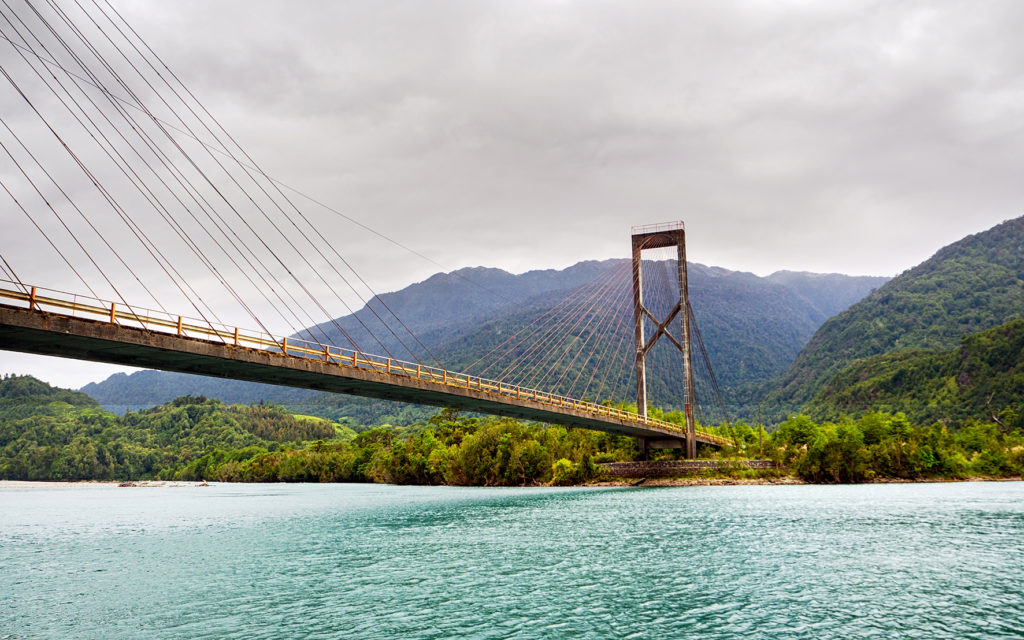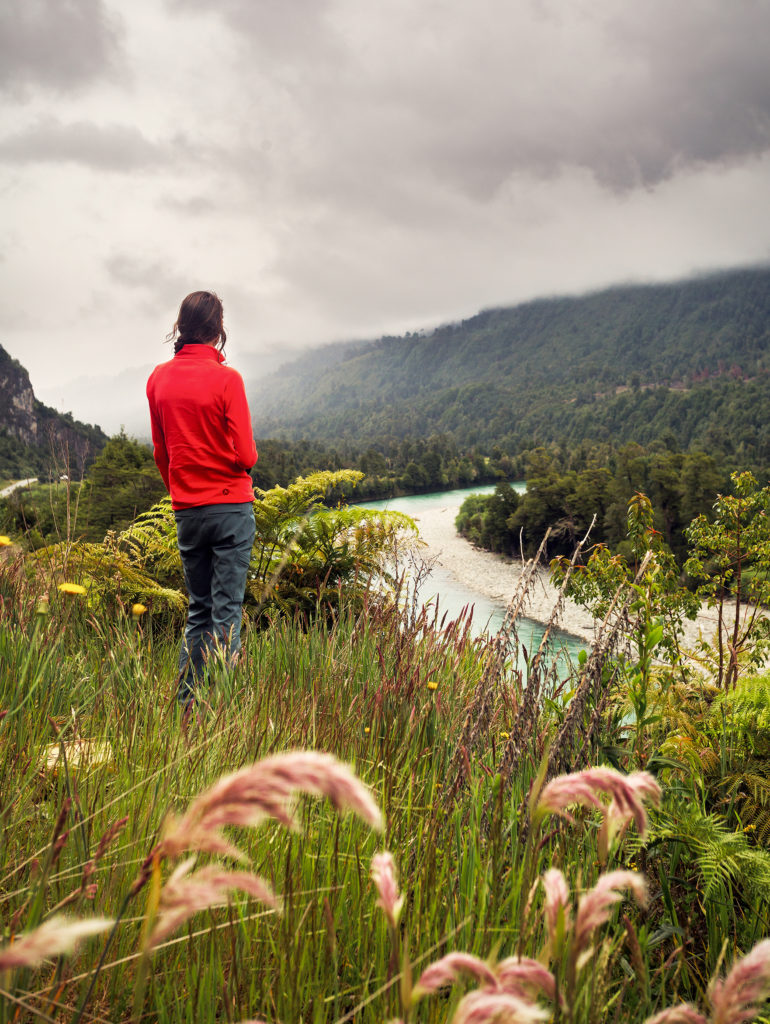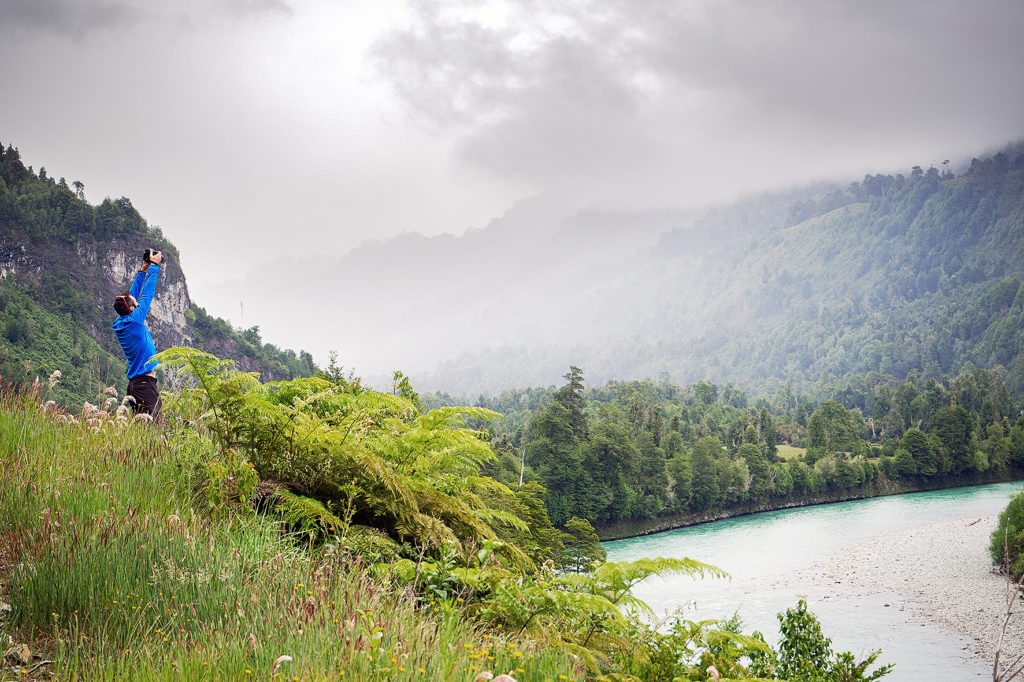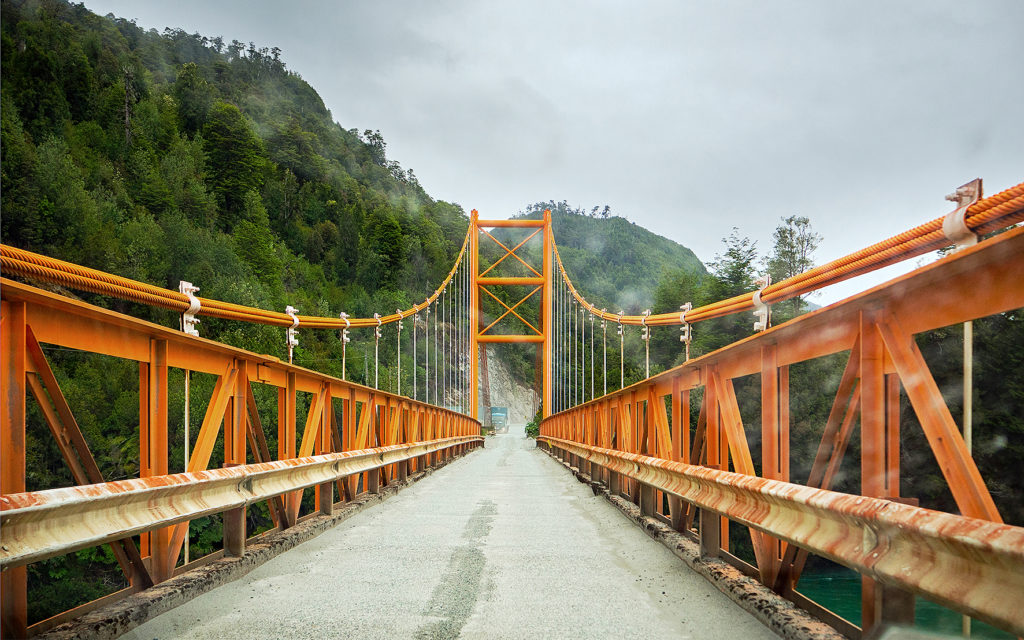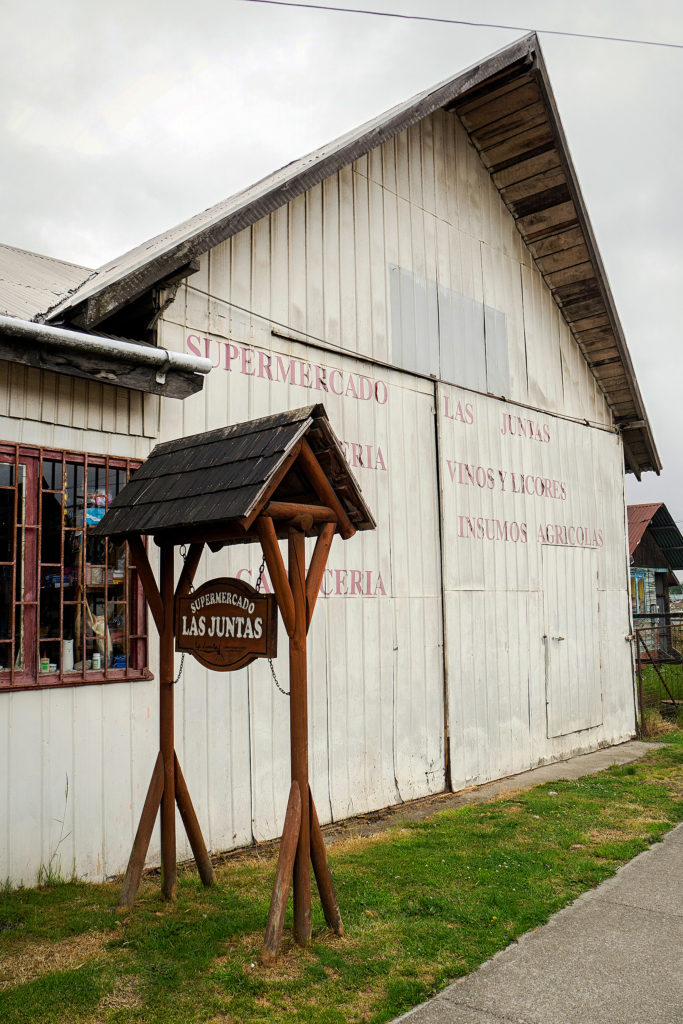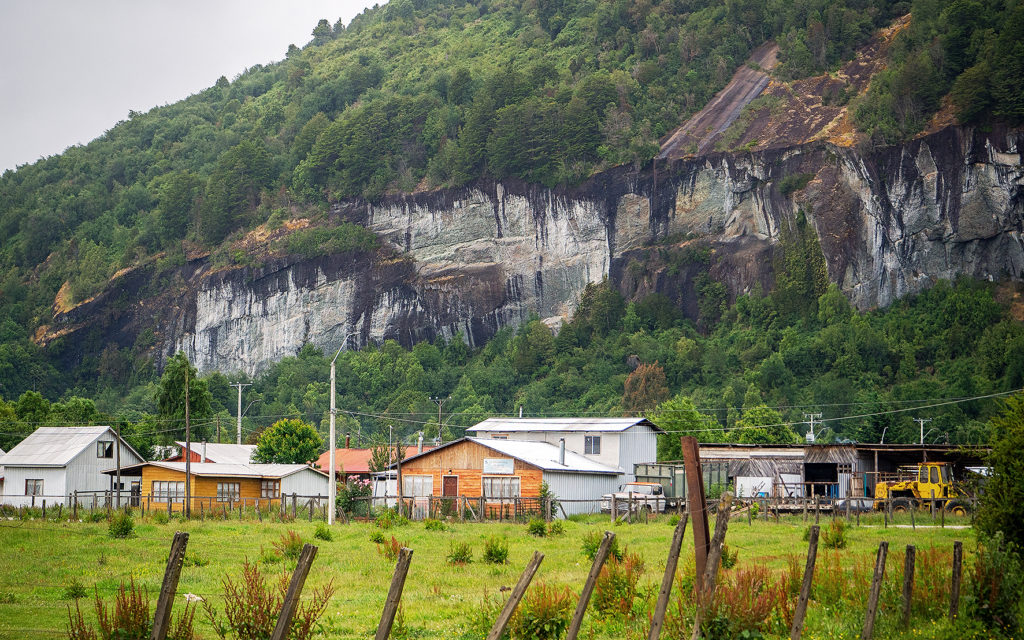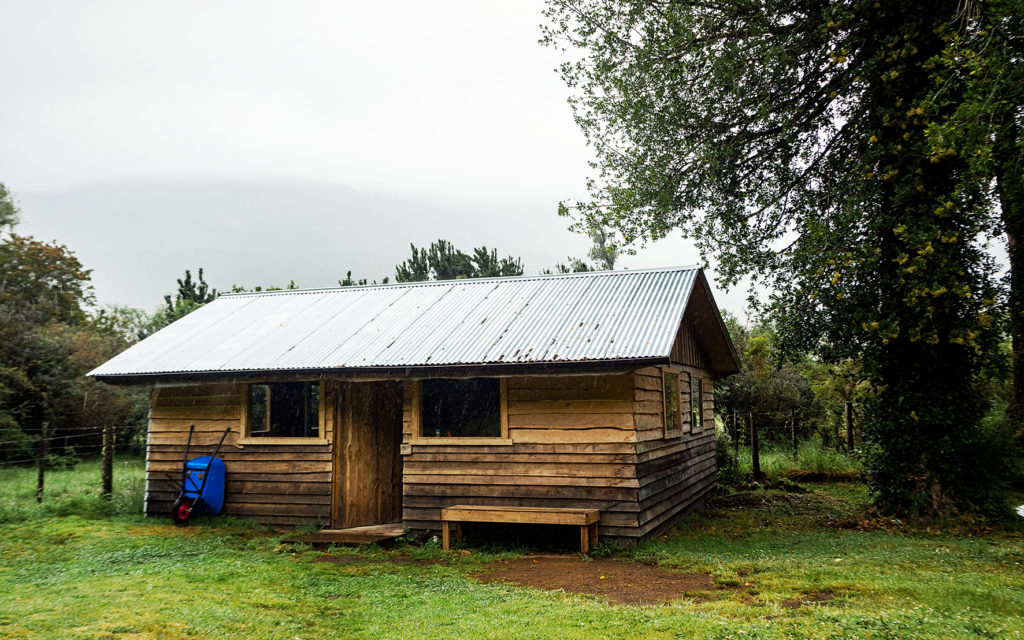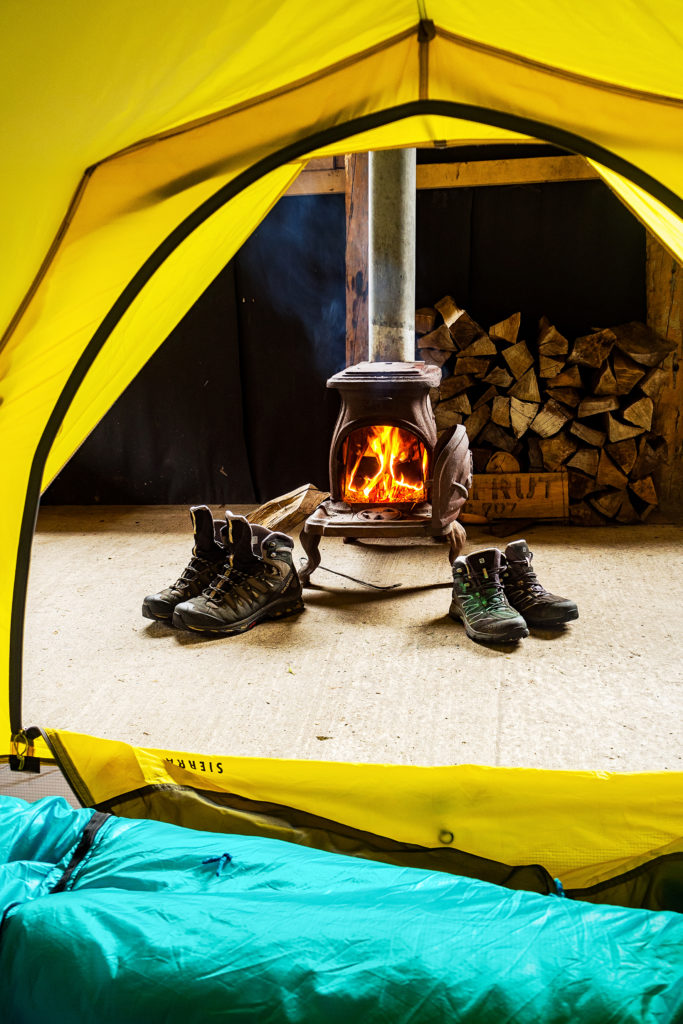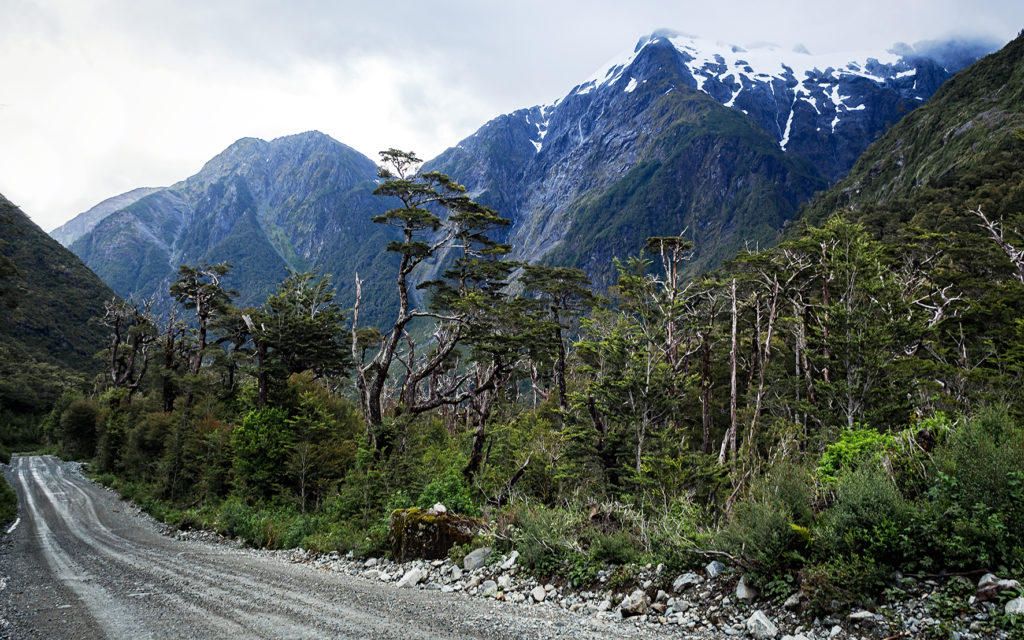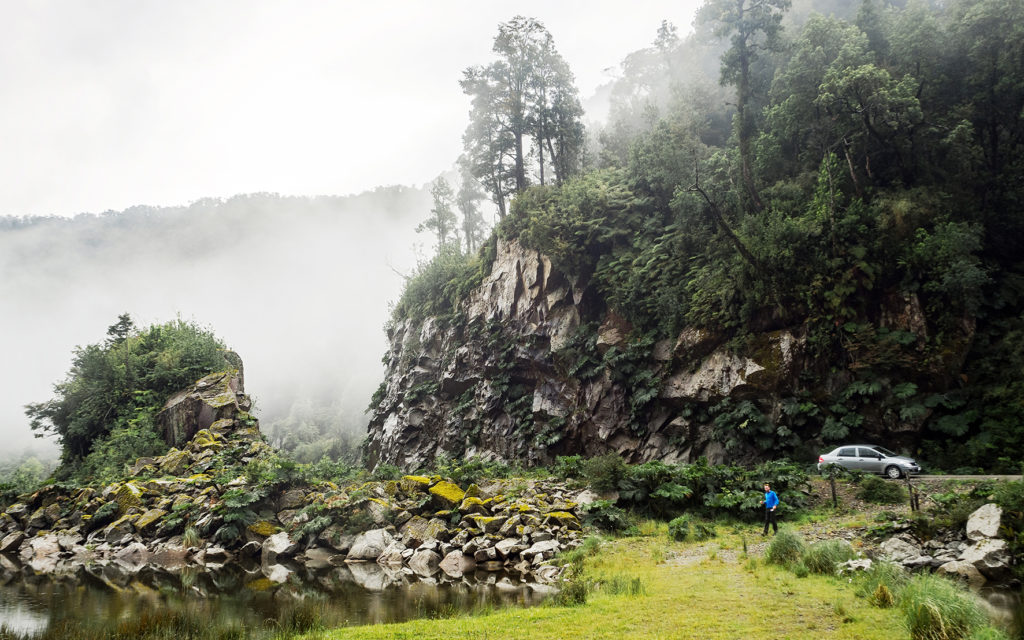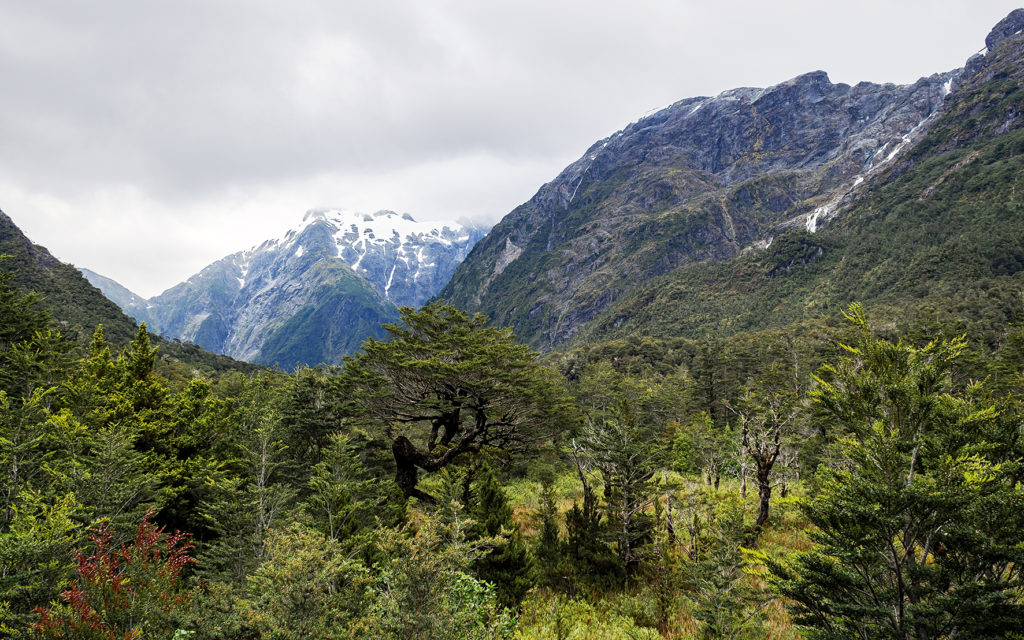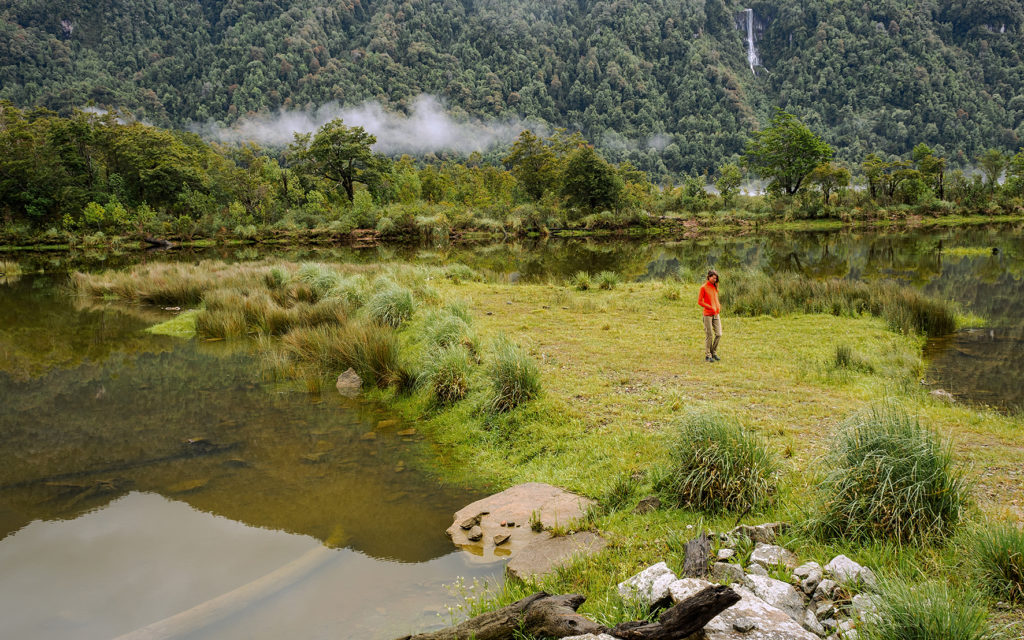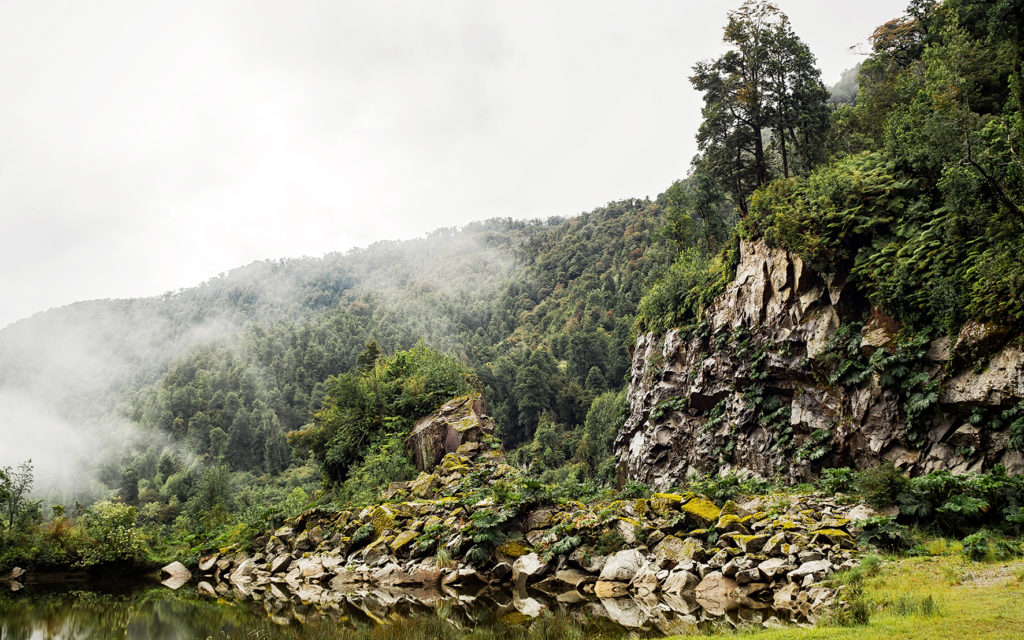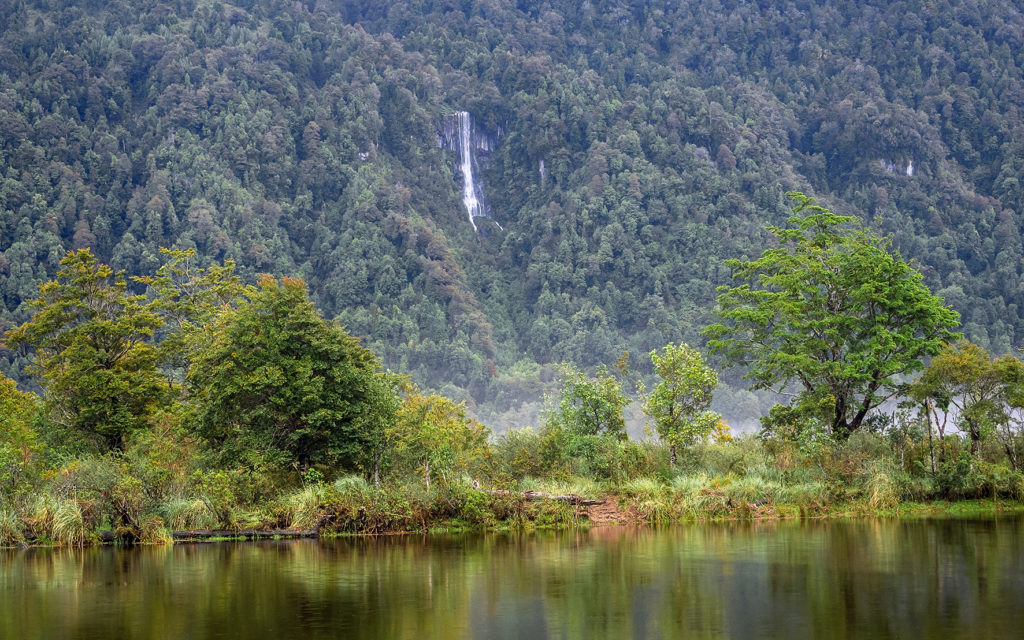It was pretty chilly still on day 2 of our Patagonia trip, and not being able to make coffee was a bit of a bummer. But we were hopeful we could buy propane once we reached Chaiten, so for the time being we forgot about coffee and headed out for a hike up the Volcano. The short 4,4km (round trip) hike lead us about 700m up to the crater of the volcano in about 1,5 hours. The trail was pretty steep, with a fair amount of stairs carved into the ground.
I won’t lie, it kicked our butt. Mainly because when thinking back to when we had our last full substantial meal, we came up with “3 days ago, on our last day in Dominical. Costa Rica!!!”. Since then we had mostly had snacks on the road and sandwiches, and had skipped a couple of dinners due to arriving late in places. So, even though we’re generally in pretty fit conditions, this one felt like we were trying to run up the Grouse Grind on an empty stomach.
The hike was beautiful. The view was mainly open all the way through, providing really nice vistas of the valley bellow and surrounding mountains. Eventually, we reached an even steeper ridge, and although the trail started to fade, the direction remained pretty clear: straight up. At that point it became more or less a scramble up to the crater.
At the very top, we were able to walk alongside the ridge of the crater, with plunging views into the crater on the one side, and out into the valley on the other. The perfect reward after our (embarrassingly) difficult ascent – we still made is up before the three 20-something kids who started a bit before us, so not all pride was lost.
The other side of the crater continued to rise higher up and we could see skinny plumes of steam escaping from the surface of the cone.

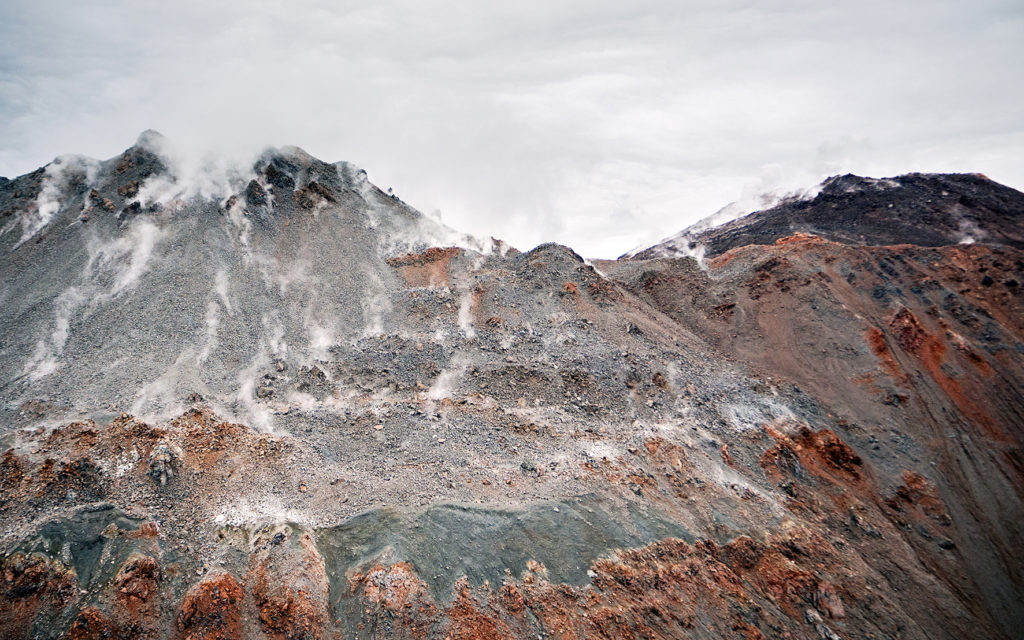
Down below, the once molten lava had now solidified in an earthy, wavy surface.

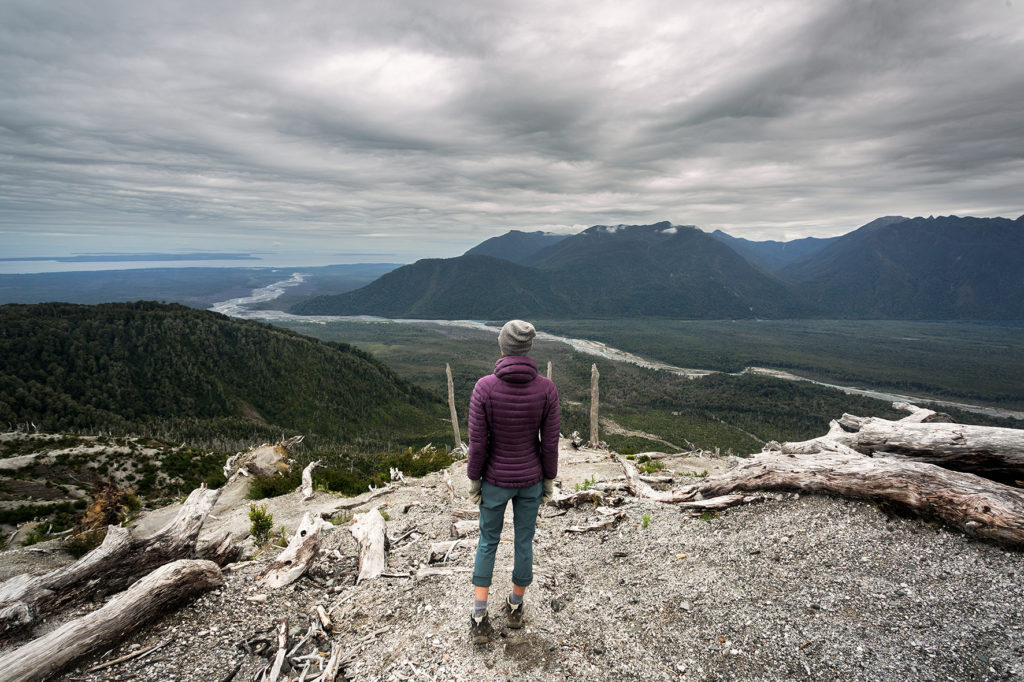
The last time the volcano erupted was in 2008, after a dormant phase of about 9500 years. It was completely unexpected and although no life was lost, a thick layer of ashes spread for hundreds of kilometers around, and created significant damage especially in the nearby town of Chaiten. The results of the eruptions remain visible today, in the bare tree trunks and stumps covering the slope of the Volcano. I loved looking at all the different shapes those tree took along the trail, and entertained myself by giving them names.
The “Rino”:
the “Gate”, marking the end of the climb:
and the “Three Sisters”, perched at the very top and overlooking the area.

This one tree below was a pretty good testament to strength and determination, still stubbornly rooted at the base of the last uphill ridge despite the damages caused by the eruption, as if saying “I’m here, I’m still standing”.

We had snacks and took some photos then headed back down. It took us about 1h20min to climb, and roughly 45 minutes to come down.
Then we headed south to the town of Chaiten, about 35km away. The road was pretty good, mainly gravel while we were still in the park, but it turned into a newly paved section in the last 10km or so. In Chaiten, we walked into the first grocery store we could find, to buy more food as well as propane. Eager to break our streak of light-weight meals, and replenish our hiking fuel, we then looked for a place to eat, and settled on Flamengo, which served huge steak sandwiches.
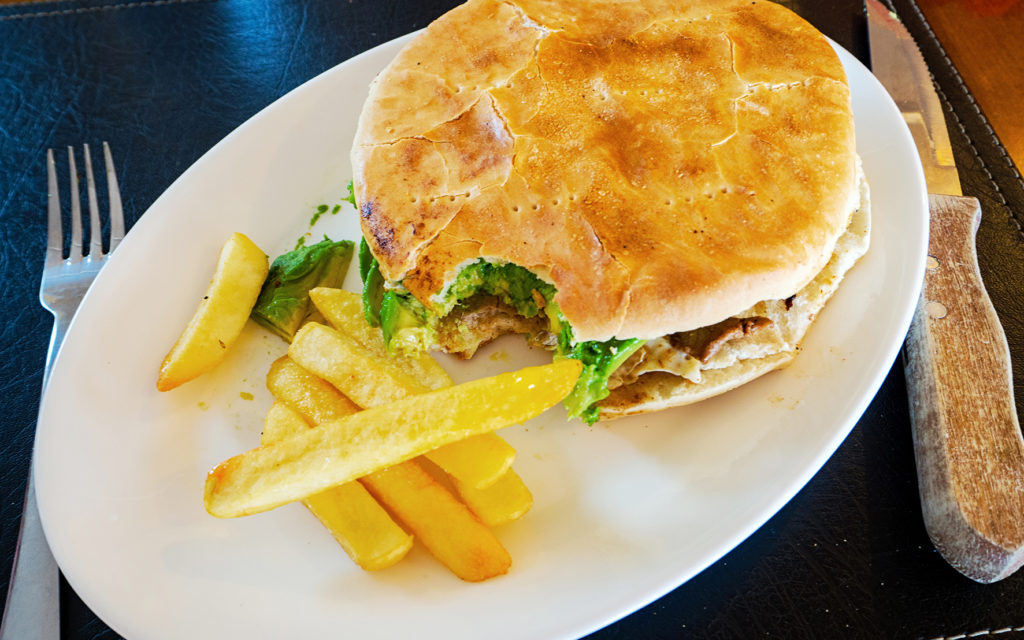
The plan was to spend the night near La Junta, about 2 hours away. The road was really scenic, with constant rivers and streams flowing by the side of the road, and low mountains all around. We stopped here and there for photos but mainly drove through, taking in the scenery and scenes that felt of a different era. Cows on the road especially reminded me of my childhood, and the winding country roads we drove on to go to school, every so often getting stuck behind a herd of cows. This place felt like we were back in the 80’s, before the rise of technology and when things seemed just a bit simpler.
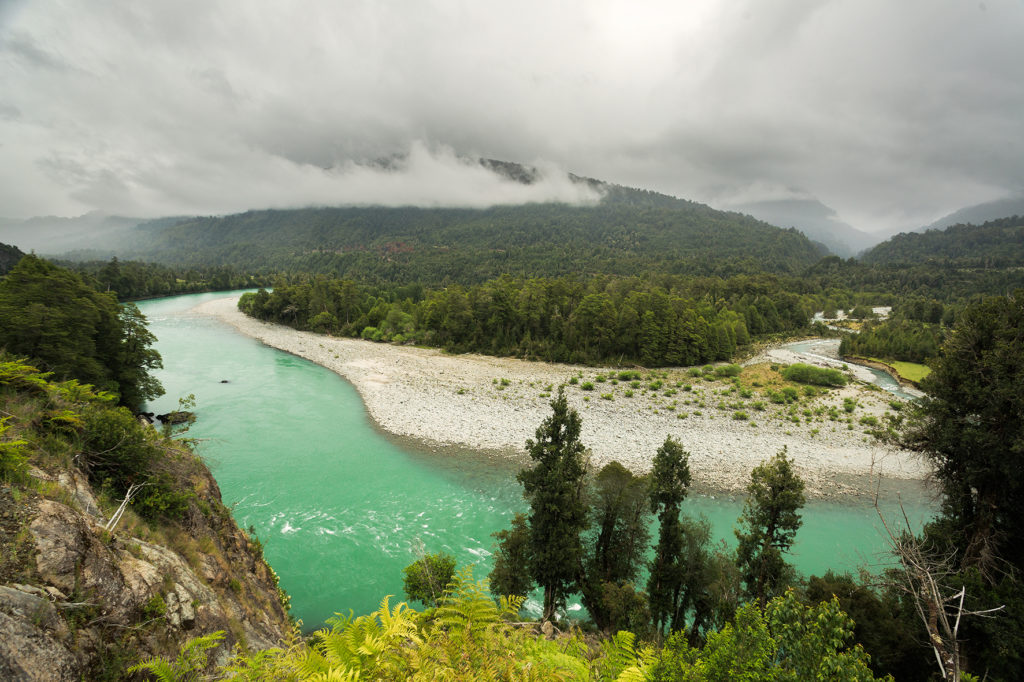
We arrived in La Junta and drove around the town a bit, and again it add the feel of our grandparents hometowns some 30 years ago, although harsher, more rugged than our European country towns – less stone houses, and more wood and metal.
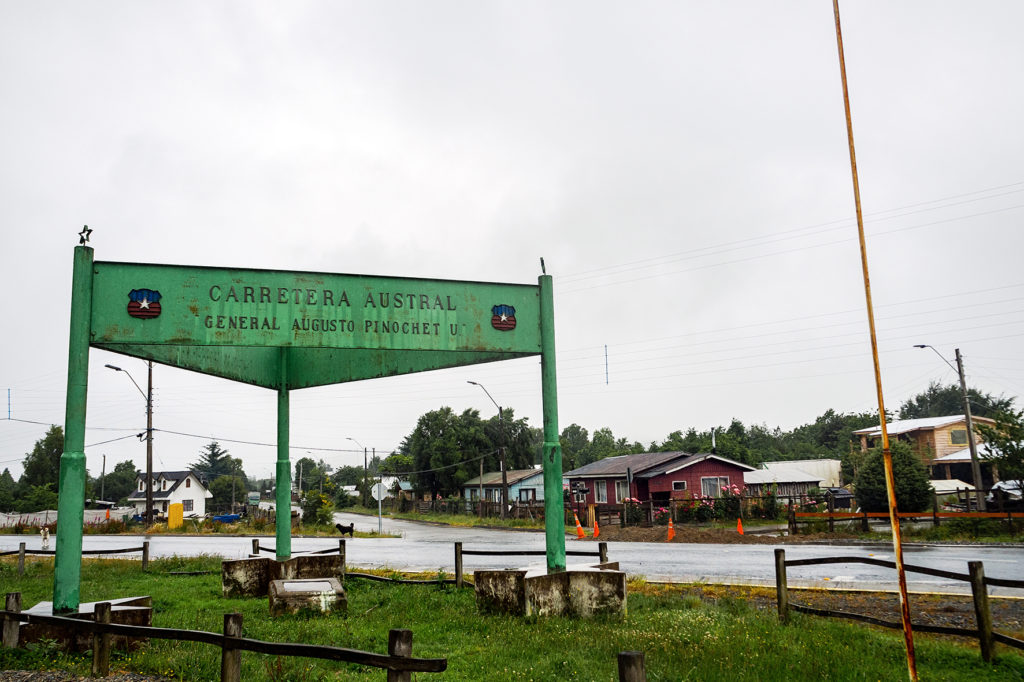
The guide book mentioned a campground about 17km west of town, which was built around a hot spring. It was overcast and the rain had been chasing us all afternoon, so the idea of a hot soak sounded pretty perfect. We drove down a gravel road for a bit, then turned onto another even rougher dirt road. Eventually we came across a pick-up truck going the opposite way. Turns out it was the owner of the campground who was leaving for the day as he had, until then, seen no costumers. He backed up a couple hundred meters to the campground gate and let us in.
The site was built around a large open grassy area. To the right was a fairly large hut (described as a “Quincho” in spanish), with a few tables, and more importantly, a wood-burning stove. Since we were the only ones there, Claudio said that instead of pitching our tent outside in the rain, we could sleep inside. He even suggested we set up the tent by the stove, in order to trap the heat.

On the other side of the grassy field were a couple of buildings with toilets and cold showers, an a few more meters past them, an opening in the bushes led to the hot spring. The pool on the left was filled with really hot steamy water coming from the ground and naturally heated to about 80 degrees. The one on the right was cold stream water. A hose between the two brought cold water into the hot pool to cool it down to a more comfortable temperature of about 45 degrees. Lush trees and bushes all around made for a nice private setting. It was pretty perfect. It cost us 10,000 pesos per person (about 20CAD each), so a bit of a splurge compared to other campgrounds, but ultimately for a private hot spring with a private fireplace and hut, it was totally worth it. We set up our tent inside, got the fire going and then enjoyed a nice hot soak.
Later, Claudio’s dad arrived with a friend. We shared the hut for dinner and then they went back to his truck to spend the night. They were pretty amused when they saw our tent in the middle of the quincho. It poured all night so we were pretty happy with our setup.
The next morning after breakfast, we took another dip in the hot springs before heading out.
Click through the gallery below for more photos of the road
